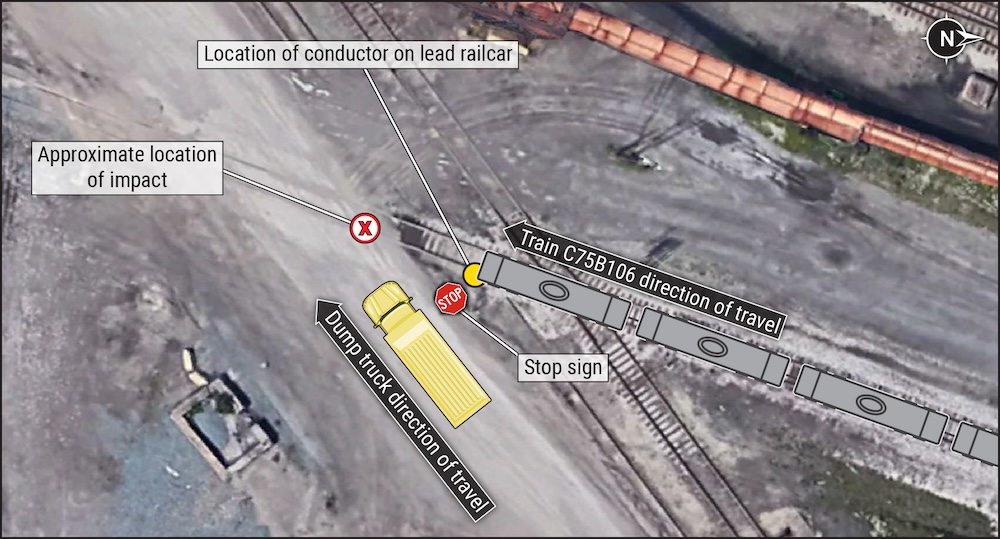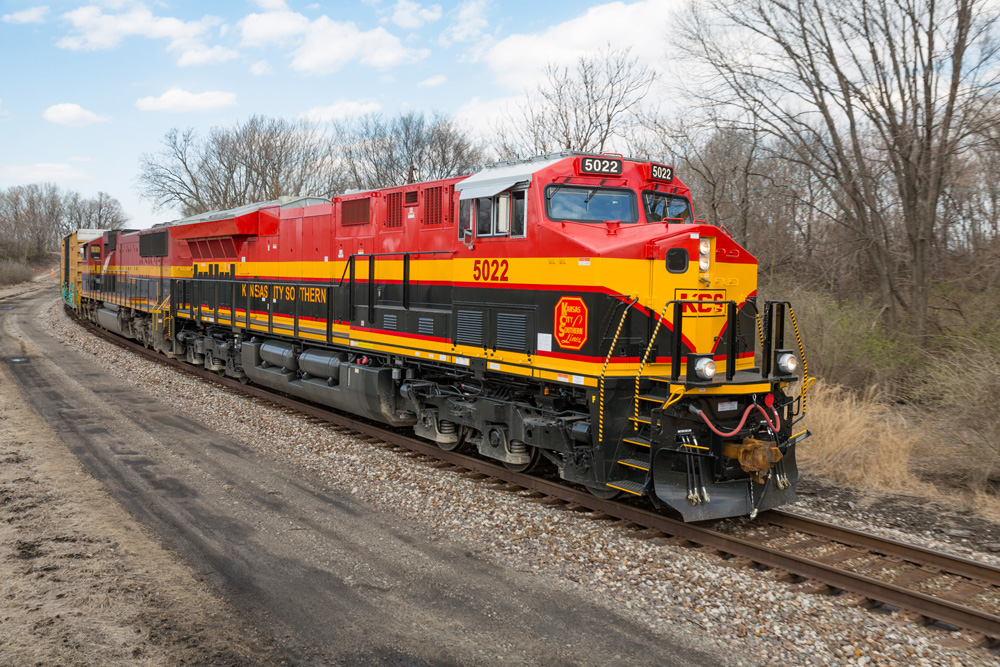
WASHINGTON — The probable cause of a grade crossing collision that killed a Norfolk Southern conductor in Cleveland last year was the crew’s failure to follow a railroad rule requiring a member of the crew to be on the ground at the private crossing, the National Transportation Safety Board said today.
The conductor of NS train C75B106 was pinned between a dump truck and the car he was riding when the train was making a shove move through the private crossing in the Cleveland-Cliffs steel mill, the NTSB said. The conductor was riding the lead railcar when the accident occurred around 1:08 a.m. on March 7, 2023.
“We determined that the probable cause of the March 7, 2023, Norfolk Southern Railway employee fatality was the crew not following Norfolk Southern Operating Rule 120 requiring a member of the crew to be on the ground at the private highway-railroad grade crossing to warn traffic,” the NTSB said. “Contributing to the accident was the design of the intersection at the private highway-railroad grade crossing preventing adequate sight distance for the driver to be able to determine if it was safe to cross the tracks.”
At the time of the accident, the conductor was communicating railcar counts over the radio as the train approached the crossing. The engineer told NTSB investigators that, shortly after saying the crossing was clear, the conductor announced stop over the radio. The engineer immediately applied the train’s full-service brakes and the locomotive’s independent brakes, but the train’s momentum carried it into the crossing.
The dump truck driver told the NTSB he did not see the train at the crossing. The road intersected the railroad at a nearly 45-degree angle, the NTSB said. “The NTSB’s assessment showed that from the location the dump truck stopped at the stop sign near the grade crossing on the night of the accident, the field of view afforded to investigators allowed about 38 feet along the railroad track to the right of the crossing. The train was traveling about 9 mph (13.2 feet per second),” the NTSB said.
Following the accident, NS issued a serious-incident notice to employees that discussed the importance of pausing to identify risks, proceeding in a safe manner, and following Rule 120 regarding grade crossing protection. Cleveland-Cliffs altered the road so that it is closer to a 90-degree angle with the tracks. The steelmaker also added additional stop signs, crossbucks, and portable light towers. The Federal Railroad Administration issued a safety bulletin covering grade crossing shove movements.
The conductor killed in the accident, Louis P. Shuster, 46, of Broadview Heights, Ohio, was president of the Brotherhood of Locomotive Engineers and Trainmen Division 607 in Cleveland, according to the union. He began working as a conductor in 2005 and became an engineer in 2014. He was a father of a 16-year-old son and also a caregiver for his elderly parents, the union said.














Corrective action still seems to be short on removing more human “judgement” to prevent a reoccurrence here or similar locations.
Certainly, a more automated safety solution could be found?
Not sure I can see from the photo what makes it difficult to tell if a train is approaching the crossing. Nothing appears to be blocking sight lines.
a) it was dark
b) no lights on that end of the train (assumption since it wasn’t the loco end)
c) probably minimal lighting in the area
Looking to the right would be a dark shadow, even with reflective vests on, you’re still out of view of the headlights. I’m guessing the truck came to a bare minimal stop then proceeded, but it was already too late as the car shove was already moving. May the engineer rest in peace.
* conductor